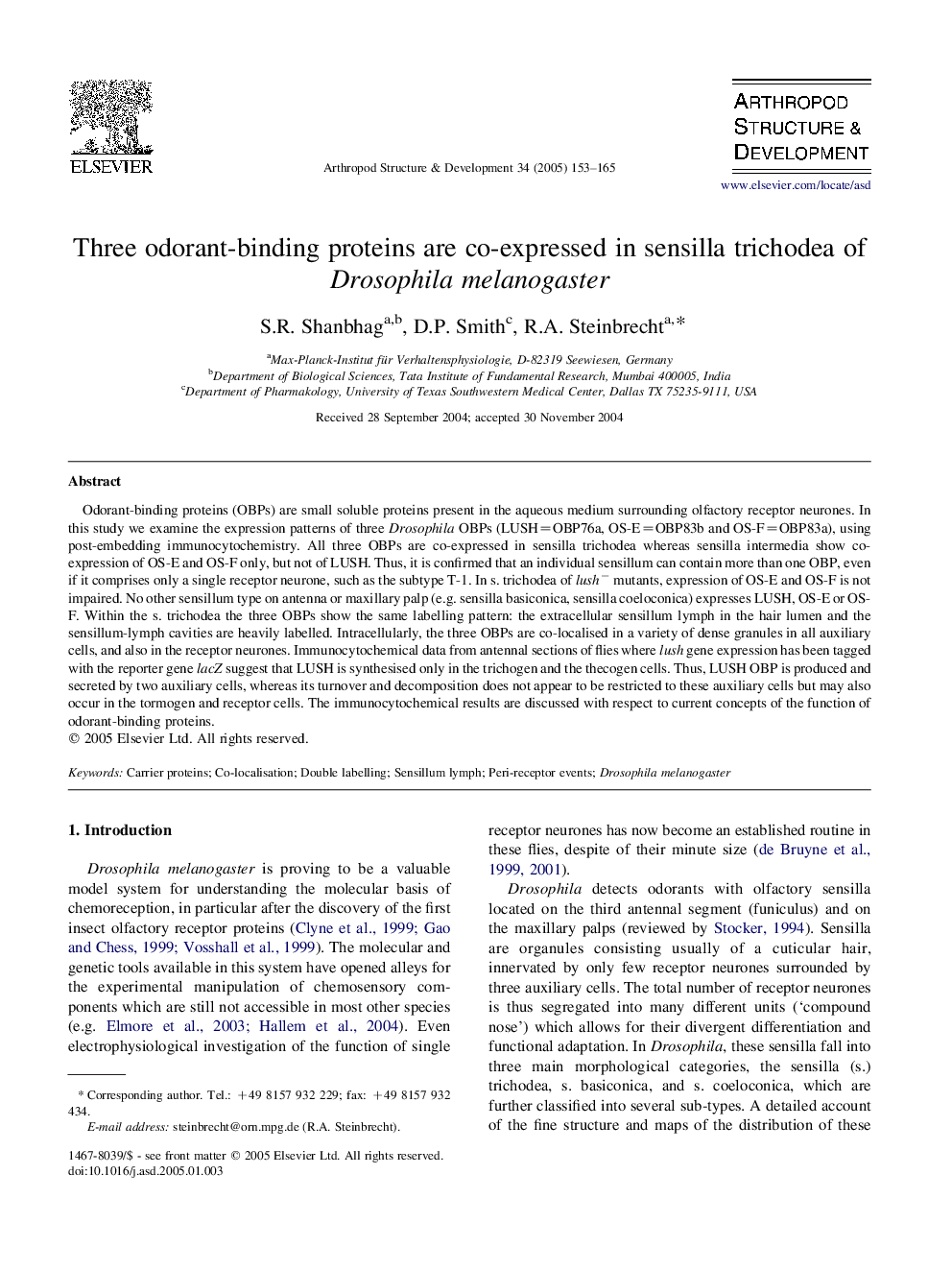| Article ID | Journal | Published Year | Pages | File Type |
|---|---|---|---|---|
| 9104167 | Arthropod Structure & Development | 2005 | 13 Pages |
Abstract
Odorant-binding proteins (OBPs) are small soluble proteins present in the aqueous medium surrounding olfactory receptor neurones. In this study we examine the expression patterns of three Drosophila OBPs (LUSH=OBP76a, OS-E=OBP83b and OS-F=OBP83a), using post-embedding immunocytochemistry. All three OBPs are co-expressed in sensilla trichodea whereas sensilla intermedia show co-expression of OS-E and OS-F only, but not of LUSH. Thus, it is confirmed that an individual sensillum can contain more than one OBP, even if it comprises only a single receptor neurone, such as the subtype T-1. In s. trichodea of lushâ mutants, expression of OS-E and OS-F is not impaired. No other sensillum type on antenna or maxillary palp (e.g. sensilla basiconica, sensilla coeloconica) expresses LUSH, OS-E or OS-F. Within the s. trichodea the three OBPs show the same labelling pattern: the extracellular sensillum lymph in the hair lumen and the sensillum-lymph cavities are heavily labelled. Intracellularly, the three OBPs are co-localised in a variety of dense granules in all auxiliary cells, and also in the receptor neurones. Immunocytochemical data from antennal sections of flies where lush gene expression has been tagged with the reporter gene lacZ suggest that LUSH is synthesised only in the trichogen and the thecogen cells. Thus, LUSH OBP is produced and secreted by two auxiliary cells, whereas its turnover and decomposition does not appear to be restricted to these auxiliary cells but may also occur in the tormogen and receptor cells. The immunocytochemical results are discussed with respect to current concepts of the function of odorant-binding proteins.
Related Topics
Life Sciences
Agricultural and Biological Sciences
Insect Science
Authors
S.R. Shanbhag, D.P. Smith, R.A. Steinbrecht,
